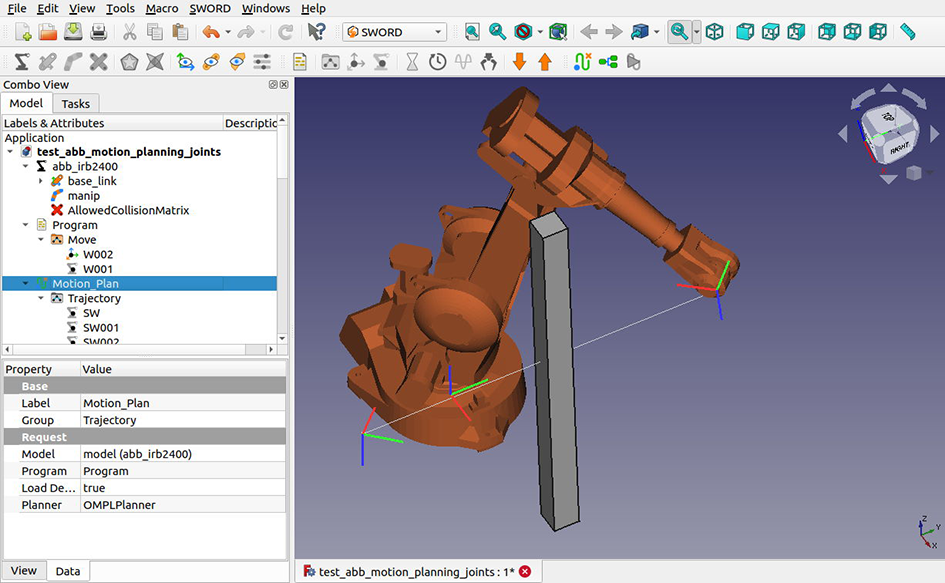Background
The ROS-Industrial program area mission is to bring the power and capabilities of ROS (Robot Operating System) to advanced industrial applications. Discussions with industry collaborators frequently identify “ease of use” as one of the biggest challenges to the wider adoption of ROS software. Based on this feedback, SwRI began developing an application to bring together many commonly used ROS tools and capabilities in a single user-friendly interface. Phase 1 of this effort (3/2021 – 4/2022) created a proof-of-concept application with core capabilities. Phase 2 (4/2022 – current) is expanding that feature set and releasing the tool for public use.
Approach
This tool is being developed as a modular plugin “workbench” for the open-source FreeCAD application (Figure 1) which allows users to work in a familiar design environment. This plugin was given the name “SwRI Workbench for Offline Robotics Development” (SWORD). This workbench provides tools to define and execute motion planning problems using a wide range of ROS libraries.

Figure 1: FreeCAD Application with SWORD Workbench and a Motion Plan
The SWORD workbench is intended to target both ROS developers and robot end-users. It can be used to simplify software development of ROS motion planning applications, but it can also be used to exercise those same motion planning tools without writing any code. SwRI plans to offer this workbench as a paid software license to the robotics community. The license fees will help fund further development.
Accomplishments
The core capabilities developed during Phase 1 have been refined, and the SWORD workbench is ready for its initial evaluation by the Beta Test group. The current capabilities allow users to define a robot and its environment, specify the desired motion path, configure the motion-planning tools, compute a robot trajectory, and visualize the result. This workbench is already being used internally on SwRI projects, improving the efficiency of ROS development efforts. The remainder of this phase will expand these core capabilities with additional ROS algorithms for automatic path generation and interfaces to run the resulting trajectories on physical robot systems.
